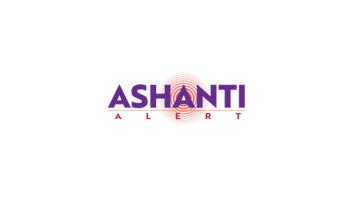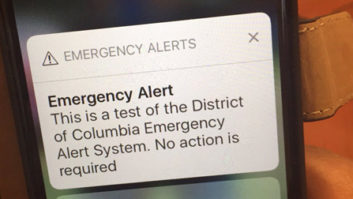
In June, the Federal Communications Commission released a Notice of Proposed Rulemaking that has garnered a fair amount of discussion on both sides of the fence. The FCC is proposing to create a new official alert, called the Blue Alert, that would be used by authorities to notify the public (through TV and radio) of threats to law enforcement officers, and to help apprehend suspects. The alerts would be used in cases where a law enforcement officer is missing, injured or killed in the line of duty, or when there is an imminent threat to an officer.
While many have said that they stand behind proposals that protect and support law enforcement, some have been critical about this particular item, saying that there are already existing codes and alerts that cover this exact issue. Not only is the code potentially redundant, detractors say, but the results may not justify the investment.
The FCC has asked for comments on this proposal.
Radio World spoke with Ed Czarnecki, senior director of strategy, development and regulatory affairs for the EAS equipment manufacturer Digital Alert Systems, about what the up and downsides may be for stations, and what kind of cost stations can expect to incur if the FCC moves to adopt the NPRM.
Radio World: What should radio stations know about how the Blue Alerts would work from a technical perspective?
Czarnecki: Of course, we only know what is in the NPRM, and don’t know yet what might change in a final rulemaking, but at this point a dedicated Blue Alert code would work just like all the other civil (CIV) event codes; that is, while the codes would need to be added to EAS devices, actual use of them would be voluntary on the part of the broadcaster. And all other EAS rules would apply, such as being limited to two minutes in length, etc.
Radio World: What technical challenges may stations expect to have in implementing these new alerts?
Czarnecki: We don’t see any significant technical issues, as this would amount to not much more than updating EAS equipment and adding the new event code for forwarding — if the station wants to, that is.
Radio World: Are you in support of the proposal?
Czarnecki: We are not taking a specific position to this proposal at this time, but will likely be filing comments with the FCC in the near future.
Radio World:What are the likely objections to it?
Czarnecki: Perhaps the most substantive we have heard consistently is that the Blue Alert concept could be handled through existing EAS codes, specifically LEW (Law Enforcement Warning) and LAE (Local Area Emergency). There is also the objection that such information would be better carried through news sources, rather than as EAS. This argument does make sense for stations that have news operations, but does not address stations that don’t have that capability.
Radio World: What will this cost to stations to implement, if anything?
Czarnecki: For stations, a “cost” will of course be the time required to update software for some EAS devices, or enter the new codes on other EAS devices. I believe that the FCC has suggested a time estimate of 10 minutes per station, and this an assumption that EAS participants should comment on if they disagree. For example, 10 minutes does not factor in the time to drive out to remote or unattended operations, so the total “cost burden,” even indirect, could be higher than what the FCC anticipates. This is valuable information for the FCC to understand in calculating the true cost basis for such rulemakings.
Similarly, the FCC has not factored in the potential costs to equipment manufacturers for such a proposal. Even when there is no charge to the customer, the EAS manufacturer must absorb some costs anyway. A number of EAS devices, for example, do not allow arbitrary EAS event code creation by users. So, because a software or firmware update is required, there is a cost burden for several EAS vendors. And this cost impact on manufacturers grows if a special software release is needed, because the FCC does not allow a sufficient timeline to include a new addition within a company’s normal software release schedule.












